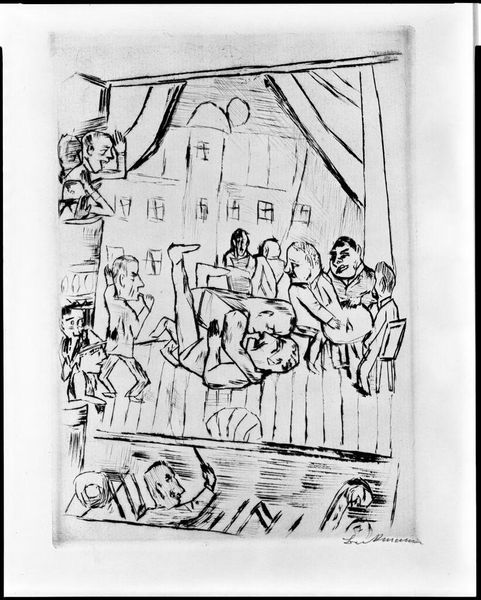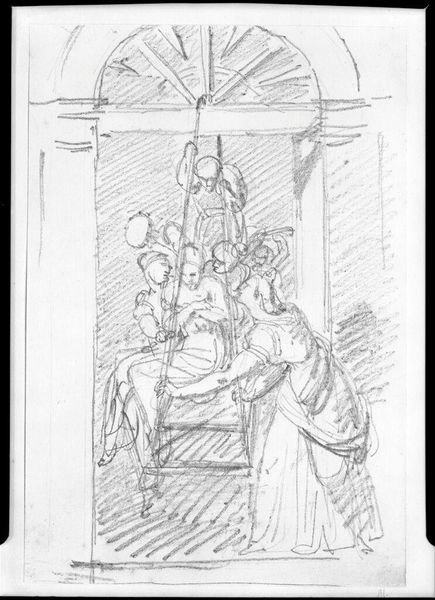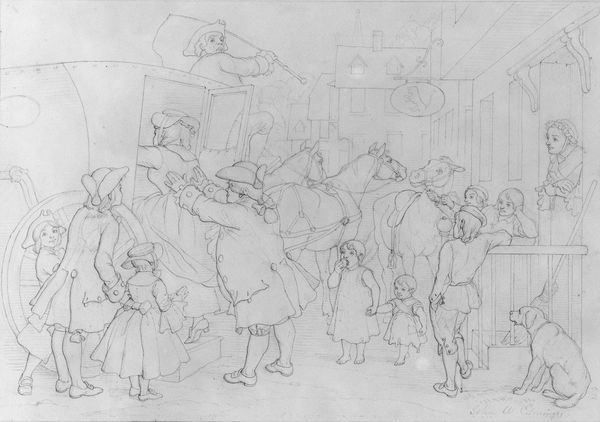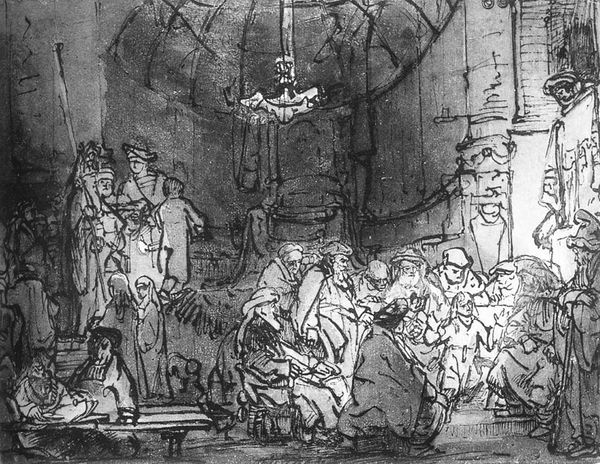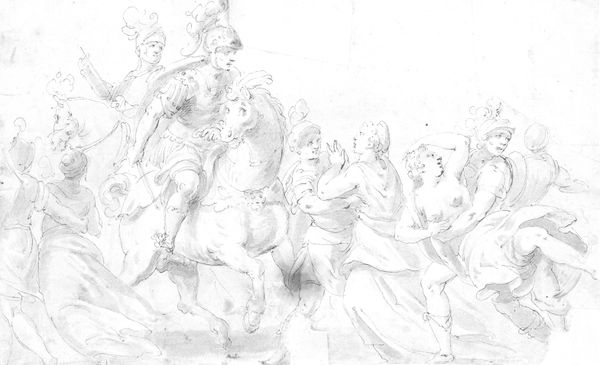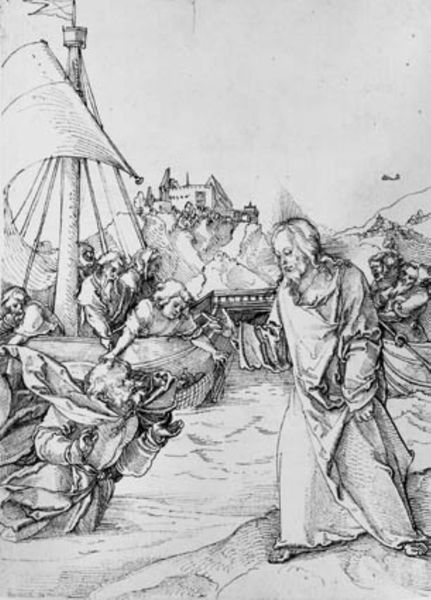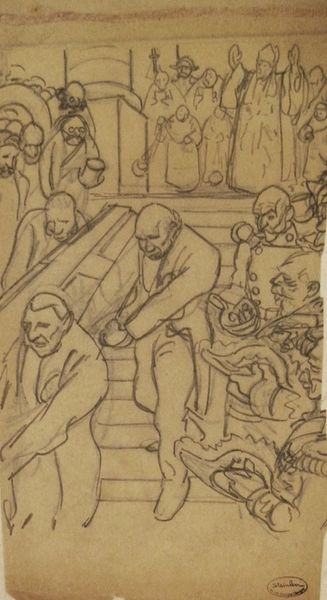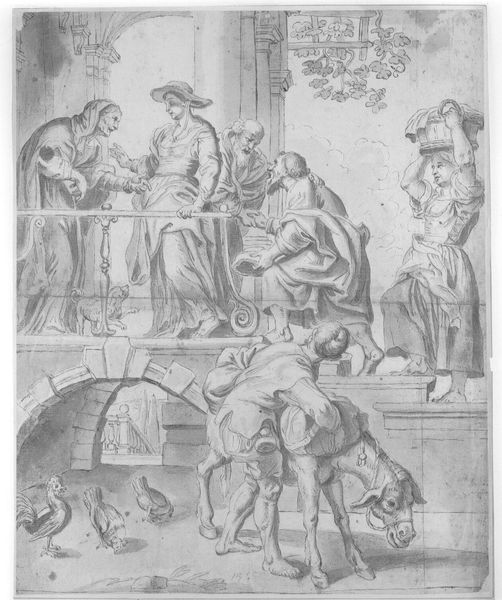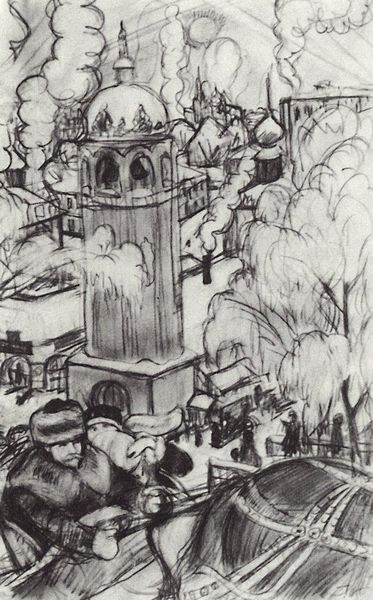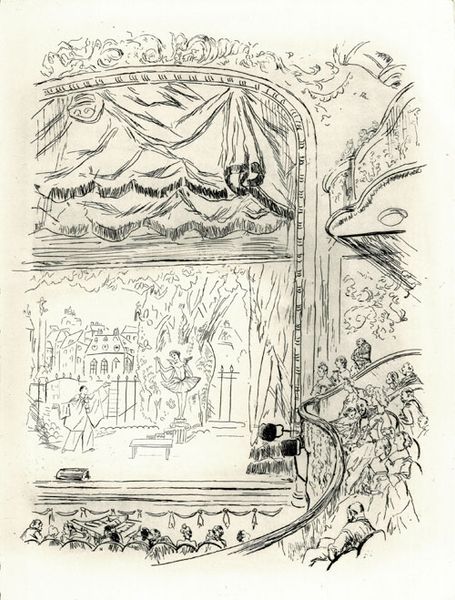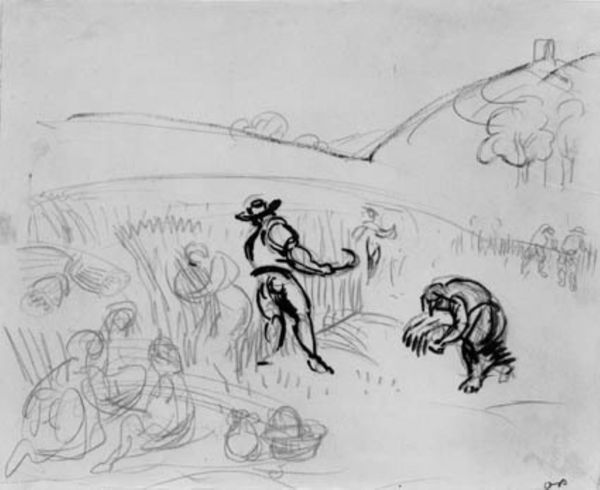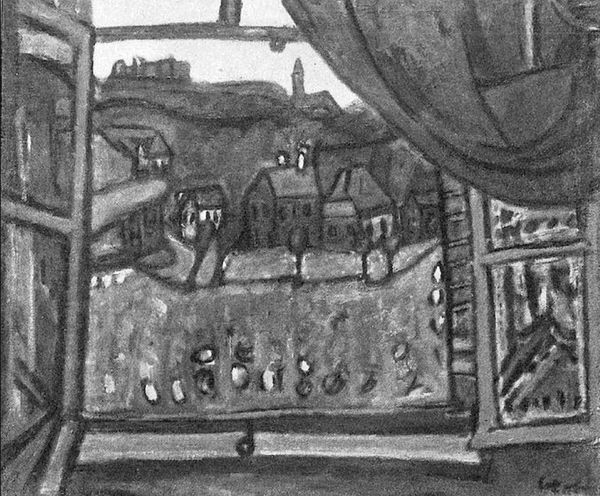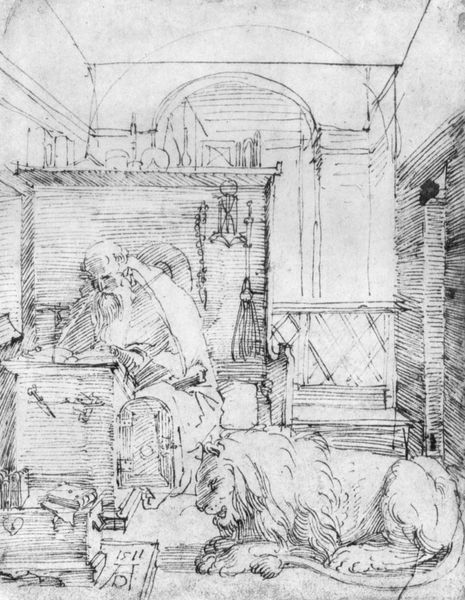
drawing, pencil
#
drawing
#
cubism
#
landscape
#
figuration
#
pencil
#
human
#
history-painting
#
modernism
Dimensions: 28 x 26.5 cm
Copyright: Public domain US
Curator: This pencil drawing by Pablo Picasso is titled "Tricorne" (study), and dates back to 1919. It offers us a fascinating glimpse into Picasso’s creative process. Editor: It has a fragmented quality. You can sense the flurry of activity suggested by these figures, almost a rehearsal caught in its early stages. The medium amplifies that feeling of raw potential, doesn't it? Curator: Absolutely. Look closely at the stark contrast between the rapidly sketched lines depicting the figures and architecture, against areas like the table in the foreground where the application of shade is more considered. I find it so evocative of the period, caught between the avant-garde drive for abstraction and more classical forms. The materiality of the paper itself— the tooth of it visible through the pencil— speak to its nature as a study. Editor: It reminds me of the Ballet Russes productions that Picasso was working on at the time. He wasn’t just a painter; he designed costumes and sets. How did his immersion in that world of spectacle influence his work here, do you think? There's a palpable sense of theatre, almost as if he were arranging figures on a stage. And note how class differences manifest: is that an authority figure watching an ostentatious show? Curator: It certainly appears so, a bullfight in the background, viewed from an elevated vantage. This study acted as preparatory design for "Le Tricorne", the ballet. A theatrical piece inspired by Spanish culture. And for what class of consumption, what gaze? One might view Picasso's engagement here through the lens of appropriation. He actively sourced various means of artistic making that served his ambitions. Editor: He borrows and repurposes with such fluidity, shifting contexts. Picasso’s art was deeply affected by the atmosphere and the post-war surge for avant-garde imagery. This seemingly simple pencil sketch pulls so much social, cultural, and material information from its time. It’s like a visual manifesto, the seeds of a movement on paper. Curator: Exactly. Examining its processes and how he engaged within the material conditions, the "Tricorne" study offers us insight not only into Picasso’s hand but into the mechanisms of culture and society itself. Editor: An evocative image brimming with questions.
Comments
No comments
Be the first to comment and join the conversation on the ultimate creative platform.
